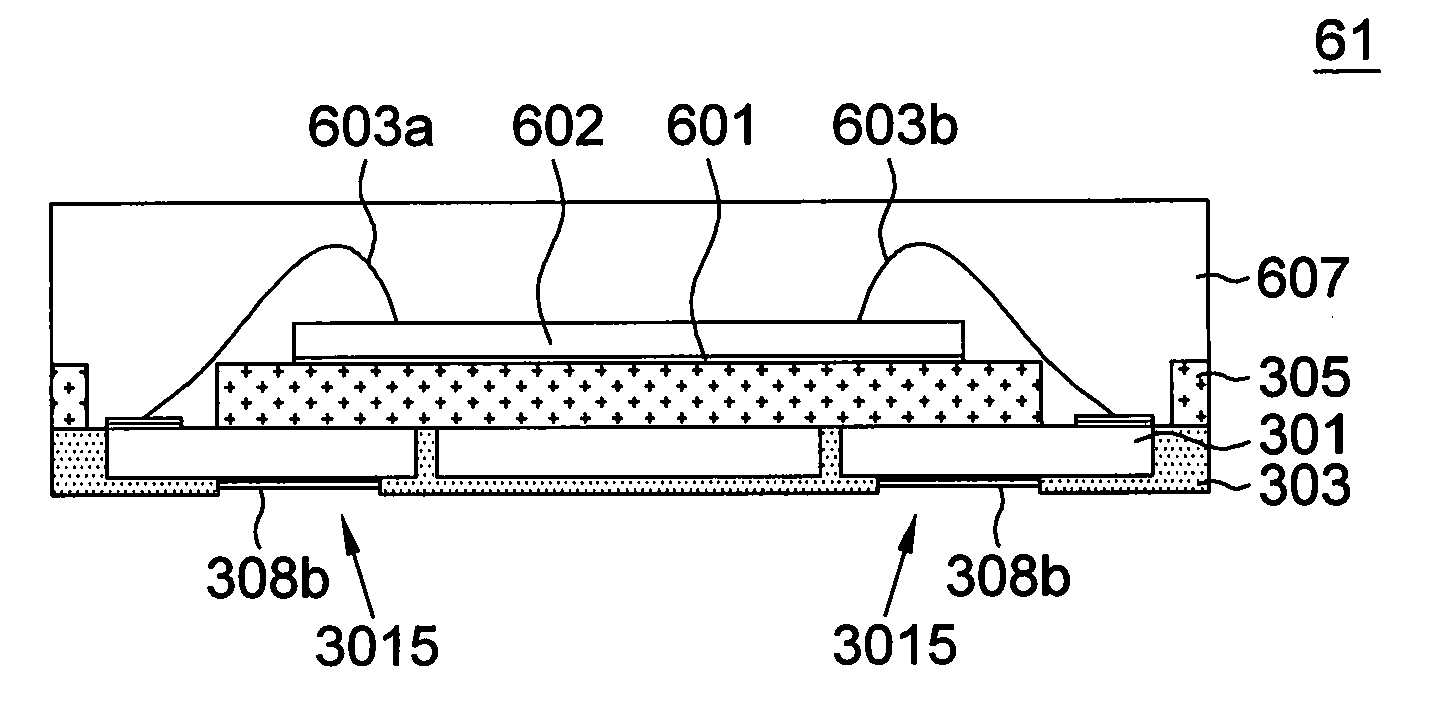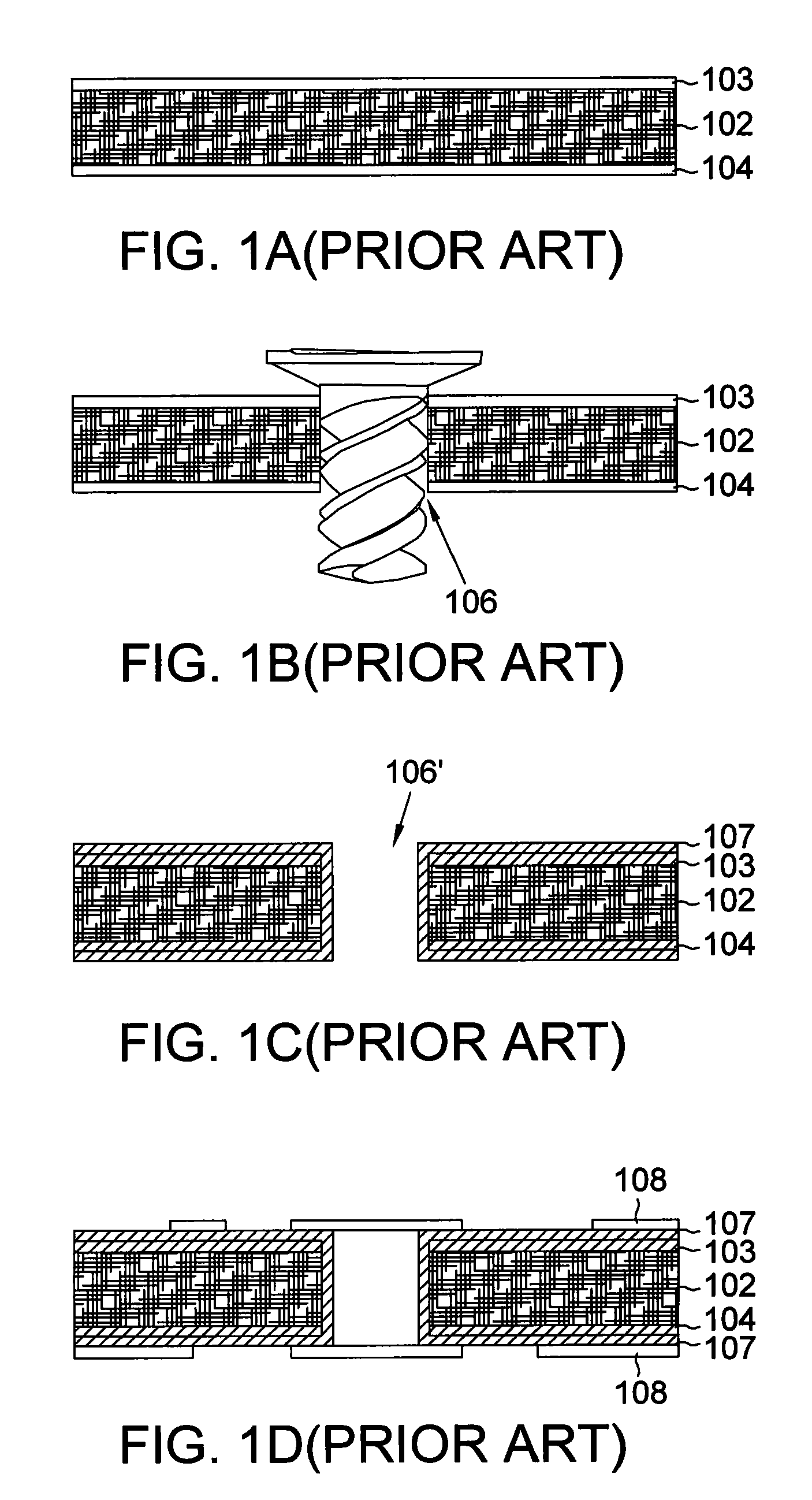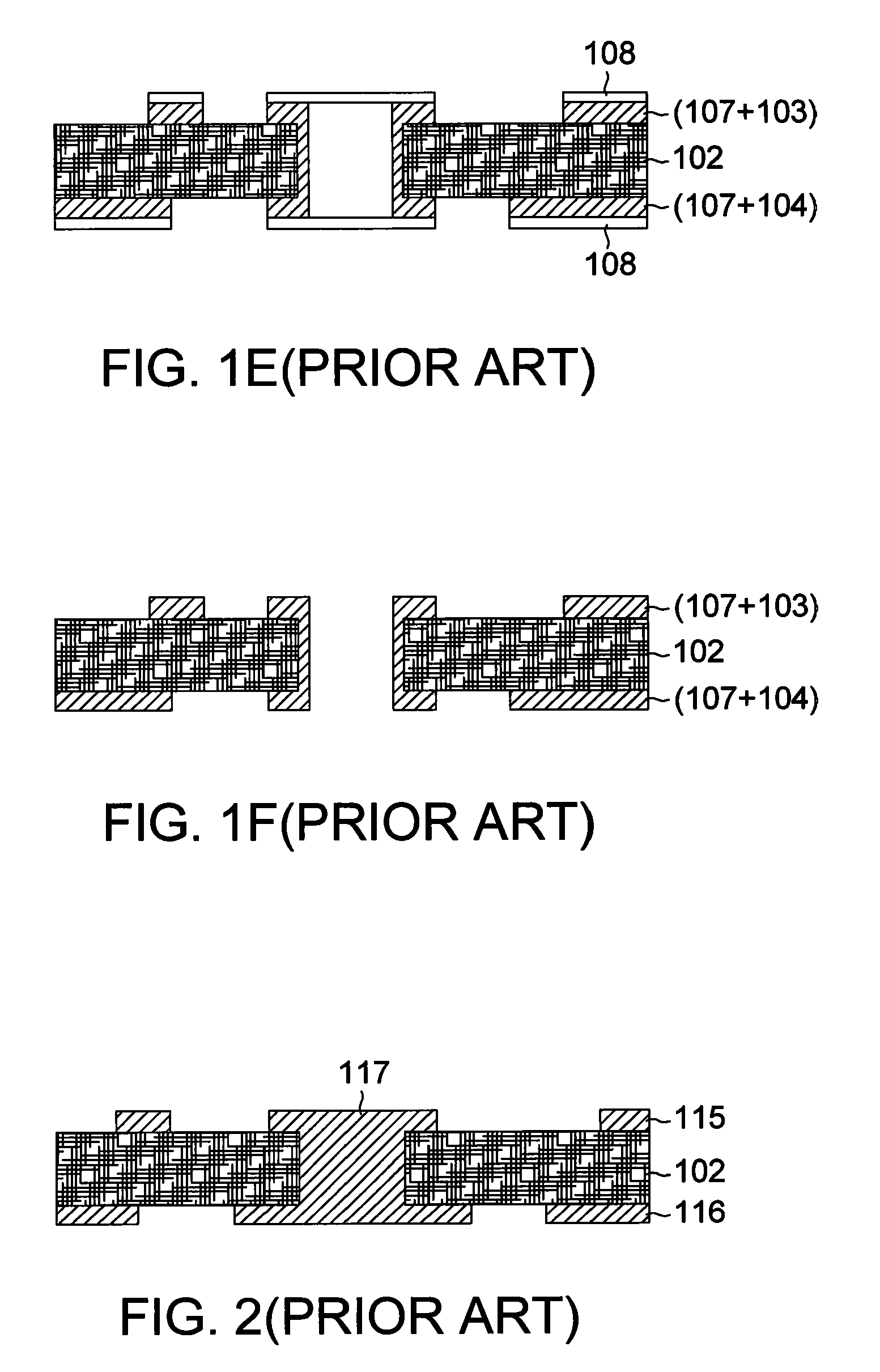Substrate having embedded single patterned metal layer, and package applied with the same, and methods of manufacturing of the substrate and package
- Summary
- Abstract
- Description
- Claims
- Application Information
AI Technical Summary
Benefits of technology
Problems solved by technology
Method used
Image
Examples
first embodiment
[0027]FIG. 3A˜FIG. 3I schematically show a progressive flow of manufacturing a substrate having single patterned metal layer according to the first embodiment of the present invention. First, a structure of an embedded patterned metal layer is formed. In the first embodiment, a carrier is used for an implement to complete the fabrication of the patterned metal layer.
[0028]As shown in FIG. 3A, a carrier 20 with the metal foils 201 and 202 on its opposites surfaces is provided. In one embodiment, a copper foil having a thickness of about 12 μm can be used as the metal foil.
[0029]As shown in FIG. 3B, the patterned metal layers 301 and 302 are then formed on the metal foils 201 and 202, respectively. Formation of the patterned metal layers 301 and 302 could be done by the following steps. Two metal layers are formed on the metal foils 201 and 202, respectively. Then, a dry film is formed on the metal layer followed by exposing and developing to form a patterned dry film on each sides of...
second embodiment
[0042]Besides substrate 51 of the first embodiment (FIG. 3I), the substrate structure can be varied by slightly modifying the methods described above without departing from the spirit of the invention. FIG. 5A is a cross-sectional view of an alternative substrate manufactured according to the second embodiment of the present invention. The features of the second embodiment identical to the features of the first embodiment are designated with the same reference numbers.
[0043]The method of fabricating the substrate 52 of FIG. 5A could be referred to the process as demonstrated in FIG. 3A˜FIG. 3H. Substrate 52 of FIG. 5A is similar to substrate 51 of FIG. 3I except the die being disposed on the portion of the patterned metal layer 301. In the second embodiment, the patterned metal layer 301 includes a die supporting pad 2071, several first contact pads 3015 (ex: bonding pads) and the second contact pads 3013 (ex: ball pads). Furthermore, the second patterned dielectric layer 305 of the...
PUM
| Property | Measurement | Unit |
|---|---|---|
| Thickness | aaaaa | aaaaa |
| Thickness | aaaaa | aaaaa |
| Dielectric polarization enthalpy | aaaaa | aaaaa |
Abstract
Description
Claims
Application Information
 Login to View More
Login to View More - R&D
- Intellectual Property
- Life Sciences
- Materials
- Tech Scout
- Unparalleled Data Quality
- Higher Quality Content
- 60% Fewer Hallucinations
Browse by: Latest US Patents, China's latest patents, Technical Efficacy Thesaurus, Application Domain, Technology Topic, Popular Technical Reports.
© 2025 PatSnap. All rights reserved.Legal|Privacy policy|Modern Slavery Act Transparency Statement|Sitemap|About US| Contact US: help@patsnap.com



